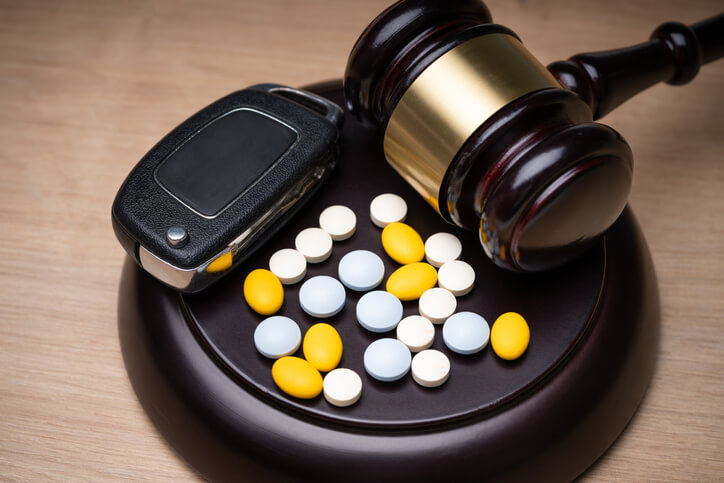Driving while under the influence of alcohol or drugs is very dangerous. It poses a safety threat to the driver as well as other drivers on the road and can result in serious injury or fatalities.
Many states, Washington included, have advanced their efforts to crack down on those caught driving while impaired. Counties or states that are considered zero-tolerance areas are especially strict with DUI laws. Drivers caught in these areas, even if they haven’t had a lot to drink, may still need a prosecuted and need a DUI attorney.

Since alcohol is not the only substance that can affect one’s ability to drive, law enforcement has had to figure out other forms of testing for drivers who are impaired due to other substances.
What Drug Recognition Experts Do
Drug recognition experts or DRE for short, are police officers who have been specially trained to recognize drivers who are impaired due to drug use. This drug might be used in tandem with alcohol or on its own.
The 12 Step Process
When it comes to drug recognition experts, they are trained to determine whether the driver in question is in fact impaired and if so whether or not their impairment is the result of a medical condition or substance use.
If the DRE determines that the driver’s impairment is resulting from drug use, the drug recognition expert will attempt to identify what drug or combination of drugs has been used.
Drug recognition experts use a 12 step process on drivers who are pulled over while apparently intoxicated.
Through this series of tests, drug recognition experts are able to determine the level of intoxication and get a solid idea of what substance was used.
Here is the process that helps DRE officers determine what substances were used by the driver.
- Breathalyzer test
- Discussion with the arresting officer
- First Pulse Test & Preliminary Examination
- Eye Examination
- Divided Attention Psychophysical Test
- Vital Signs & Second Pulse
- Dark Room Examinations
- Examination for Muscle Tone
- Checking for Injection Sites & Third Pulse Test
- Driver’s Statements (misc. observations)
- Analysis & Evaluator’s Opinion
- Toxicological Examination
This test will give the DRE time to evaluate the driver and form an expert opinion on what substance is affecting the driver. The DRE may speak with the arresting officer several times in order to fully understand the circumstances under which the driver was pulled over.
The Seven Drug Categories
Different types of drugs affect people differently. They influence a different part of the brain and their effects can be more or less severe on the driver. Drug recognition officers are trained to recognize which category of drug-impaired drivers have taken and how it is affecting their driving skills.
Here are the seven drug categories:
- Central Nervous System Depressants: These drugs slow both the brain and body and include drugs such as Xanax, Prozac, and Thorazine.
- Central Nervous System Stimulants: CNS stimulant drugs cause blood pressure to rise and heart rate to accelerate. Stimulants of this nature include drugs such as cocaine, methamphetamine, and amphetamines.
- Hallucinogens: This category of drugs causes people to see and perceive things that are not real. Hallucinogens are very dangerous for drivers as their perception of their surroundings will not be accurate — posing a huge risk of a wreck. Examples of hallucinogens include substances such as LSD, Ecstasy, and peyote.
- Dissociative Anesthetics: These drugs are meant to inhibit pain receptors in the brain. One example of a dissociative anesthetic is dextromethorphan.
- Narcotic Analgesics: These drugs relieve pain while also causing a sense of euphoria for the user. They induce mood changes and can greatly alter the state of the user’s mind. Examples of narcotic analgesics include opium, heroin, morphine, and oxycontin.
- Inhalants: As the name suggests, inhalants are breathable substances that alter the state of the user’s mind. Common inhalants include paint, paint, thinners, and gasoline.
- Cannabis: Marijuana has an active ingredient called Delta-9 Tetrahydrocannabinol (THC). this is the ingredient that alters the mind and makes it dangerous for users to operate a vehicle.
Contact Us
Facing DUI charges and license suspense are tricky scenarios. If you are facing legal trouble due to DUI charges, it’s time to get a DUI lawyer on your side.
It’s important to remember that drivers face DUIs for multiple reasons and it is up to them to prove themselves capable of being responsible on the road. Even having a BAC of less than 0.08 percent can find you with a DUI so appropriate legal action is necessary to protect oneself.
DUI consequences are long-lasting and severe, don’t leave your driving privileges up to fate. If you are facing DUI charges, get legal help immediately.
Contact DUI defense attorney Matthew Leyba of Leyba Defense to start building your case today.
